An axe is a handy tool and a must-have for splitting/cutting logs, building an outdoor shelter, or even felling trees.
A bushcraft axe is essential for camping, hiking, or just venturing into the woods for any reason.
In this piece, we’ll go through the various types of axes available, things to consider when choosing the best bushcraft axe, and what we believe are the five best bushcraft axes.
Things to Consider When Choosing the Best Bushcraft Axe?
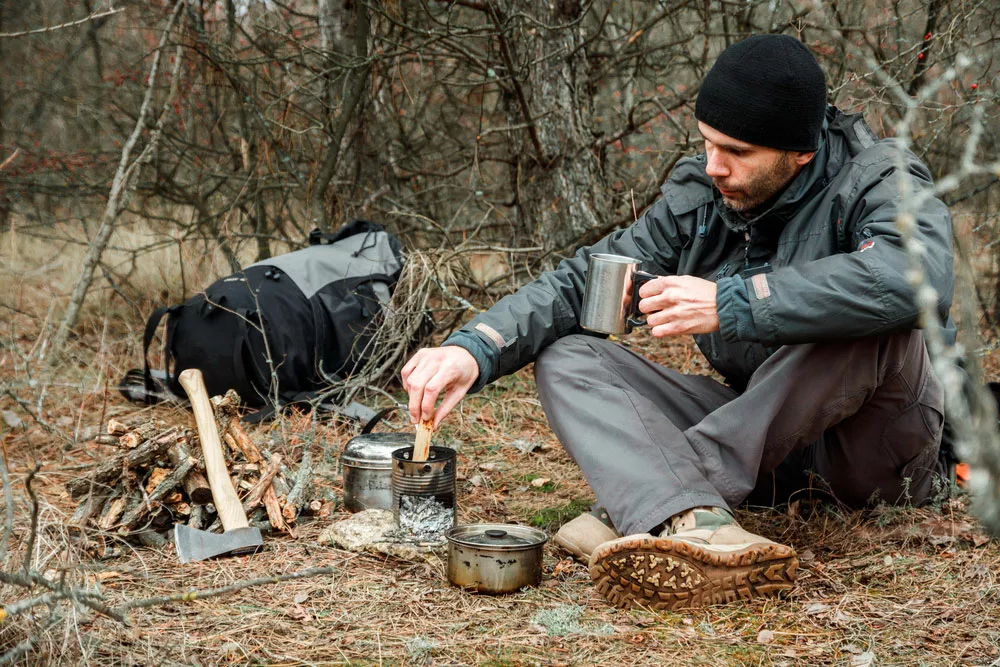
A man relaxes next to bushcraft gear.
There are several aspects to consider while selecting a bushcraft axe. We’ll cover them at length below.
Versatility
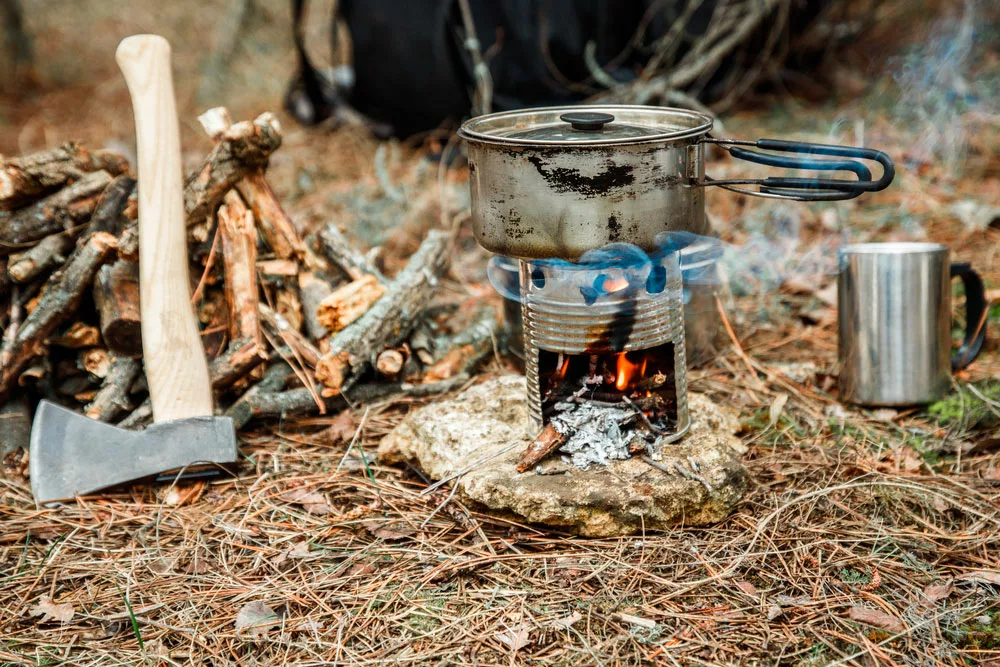
Bushcraft attire.
Versatility is essential when selecting the best bushcraft axe because it avails the following:
- It provides efficiency and convenience as it allows you to use the axe for chopping wood, split logs, and even use it as a hammer. Thus, it eliminates the need for having many specialized tools.
- Furthermore, a versatile axe can be helpful in survival situations where resources are scarce.
- Types of Steel

A Stainless Steel sheet.
Carbon steel
It is renowned for its strength and ability to keep a sharp edge, which makes it an excellent choice for chopping and cutting tasks.
However, it is more vulnerable to rust and corrosion than stainless steel.
Stainless steel
It is more resistant to rusting than its carbon steel counterpart. Nonetheless, it easily wears out than carbon steel as it is softer to make.
The bottom line is that your specific needs and preferences will determine your choice.
- Type of the Axe
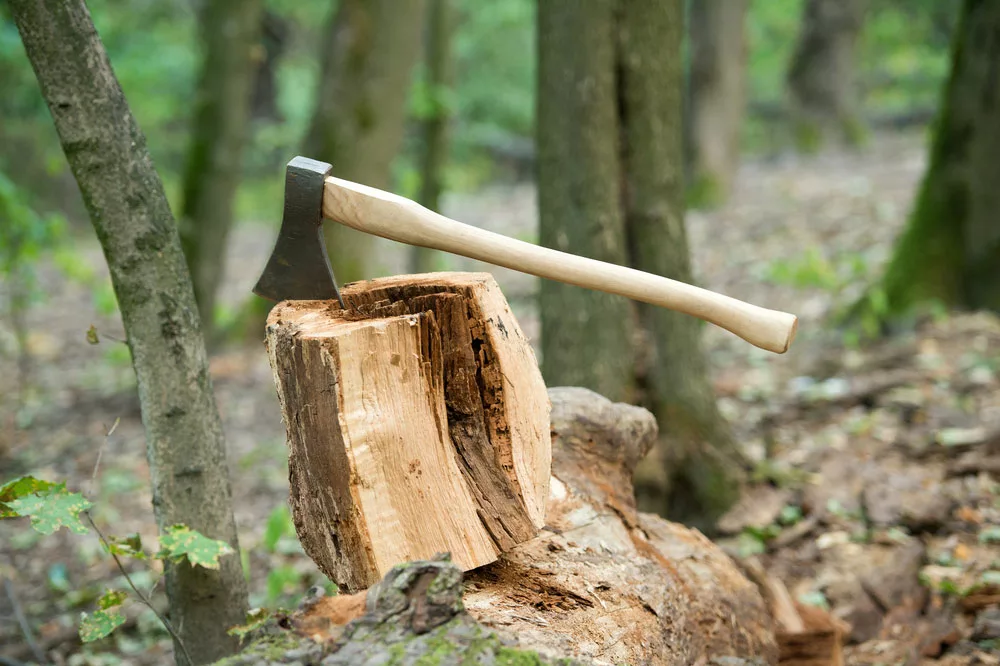
A splitting axe.
The axe type determines the tasks for which the axe is best suited.
- Small axes are preferable for tasks requiring precision and control, such as carving and whittling.
- Medium-sized axes are useful where you need more power and leverage, such as chopping and splitting.
- Lastly, felling axes are explicitly for felling trees thanks to their longer handles and larger heads. These provide more power and control when chopping through thick tree trunks.
Blade profile
The ideal blade profile for a bushcraft axe is a secondary relief chisel profile. Such types are excellent for shaving, splitting, and cutting wood.
Repairability in the Field
If you regularly use a bushcraft axe, the handles will eventually wear out because of tear and wear.
Wooden handles are the most likely to split or break, but they are also the simplest to replace. Metal and synthetic handles are more durable but have drawbacks, such as being heavier and less shock-absorbing.
Lastly, synthetic handles are more difficult to repair or replace.
Top 5 Bushcraft Axes
Here are the top 5 bushcraft axes as per our reviews:
Hults Bruk Aneby Hatchet
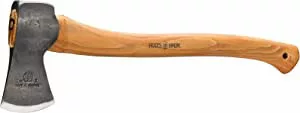
Top Characteristics
- The Hults Bruk Aneby is a medium-sized axe suited to various applications.
- Furthermore, it is lightweight enough to carry while camping or long distances.
- Also, the axe is comfortable to handle as you can use it with one or both hands.
- It has the Turpentine pattern designed by Hults Bruk, a rounded poll for skinning, and a finger notch for fine carving.
Shortcomings
- It has carbon steel which is prone to rust
- It is only available with a 20-inch handle which can be pretty small for some tasks.
Council Tool Hudson Bay Axe
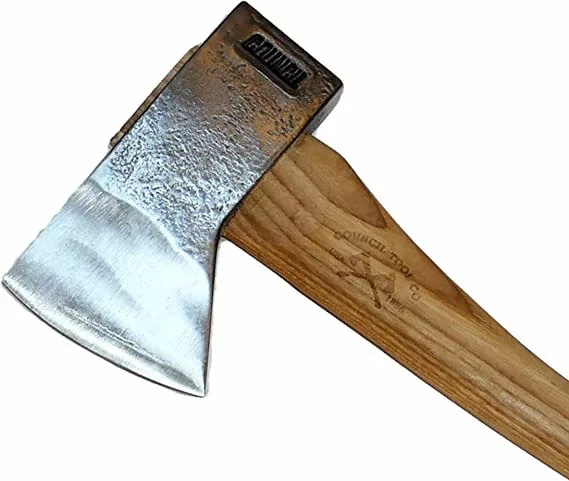
Top Characteristics
- Council Tool, Hudson Bay axes, are synonymous with a traditional design, which features a long, straight handle and a large, curved blade.
- It is typically a high-quality steel axe, ideal for felling trees and chopping wood.
- This axe is also popular for its durability and long-lasting sharpness.
- It is available in different sizes and weights to suit your preferences and needs.
Shortcomings
- You need to sharpen it after purchase, and the axe is slightly heavier on one side.
Council Tool Boy’s Axe

Top Characteristics
- It’s an excellent bushcraft axe, thanks to its slightly heavier head, and it also features a less prominent beard than its Hudson Bay counterpart.
- It helps fell medium-sized and small trees, split wood for a campfire and perform other bushcraft tasks.
- It also has similarities to the Hudson Bay model, with a 24-inch handle. Besides, it’s a US-manufactured axe, like all the Council Tool axes.
Shortcomings
- It is a relatively small axe, so it may not be suitable for more demanding tasks.
- It is also cumbersome to use.
Snow and Neally Hudson Bay
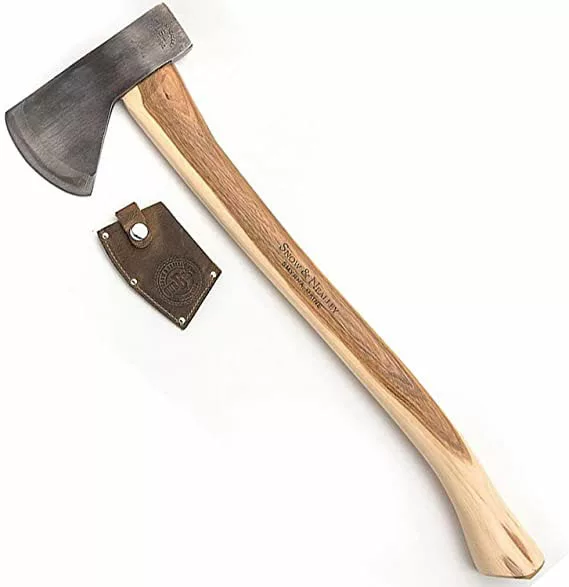
Top Characteristics
- It’s a sturdy, long-lasting bushcraft axe. Again, since its handle is Hickory wooden, you can easily replace it anytime it’s broken.
- Secondly, the axe is relatively lightweight, ensuring easy portability, and it is also quite sharp, thus providing excellent working efficiency.
- The axe features a protective leather sheath making it safe to carry around.
Shortcomings
- Its wooden handle has a liqueur finish, making it extremely slippery when wet.
- Secondly, the axe is relatively light and thus may be unsuitable for taxing wood chopping and splitting applications.
Estwing Double Bit Axe
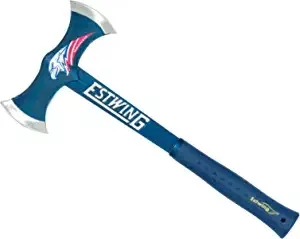
Top Characteristics
- The Estwing axe is metallic and features a double-bit design that boosts the tool’s durability.
- Secondly, the axe has a relatively short 17-inch handle; overall, it weighs 2.3 lbs.
- It has a shock-absorbing grip (suitable for wrists and arm joints).
- Moreover, the axe features a nylon sheath (pouch); hence, it’s safe to carry. Shortcomings
- It’s not good enough for a tree-felling or logs-splitting job.
FAQs
What is the ideal size for a bushcraft axe?
The ideal length of bushcraft axes should be between 18 and 24 inches.
It allows them to be easily stored in a belt loop or backpack while providing sufficient leverage for striking with significant force.
Also, such dimensions ensure that it has the force necessary for chopping wood or felling trees. Lastly, such an axe is easy to store and transport.
What is the best weight for a bushcraft axe?
A lightweight bushcraft ax is the best. It makes it portable and still quite heavy enough to cut and chop wood efficiently.
Thus, the tool should ideally have an axe head that weighs 1.5 to 2.5 lb and a total weight of less than 3 lb.
Conclusion
A quality bushcraft axe can last you for more than a decade, so it doesn’t matter, even if you have to spend heavily to acquire a top-grade tool. For more on bushcraft axes, talk to us anytime.
